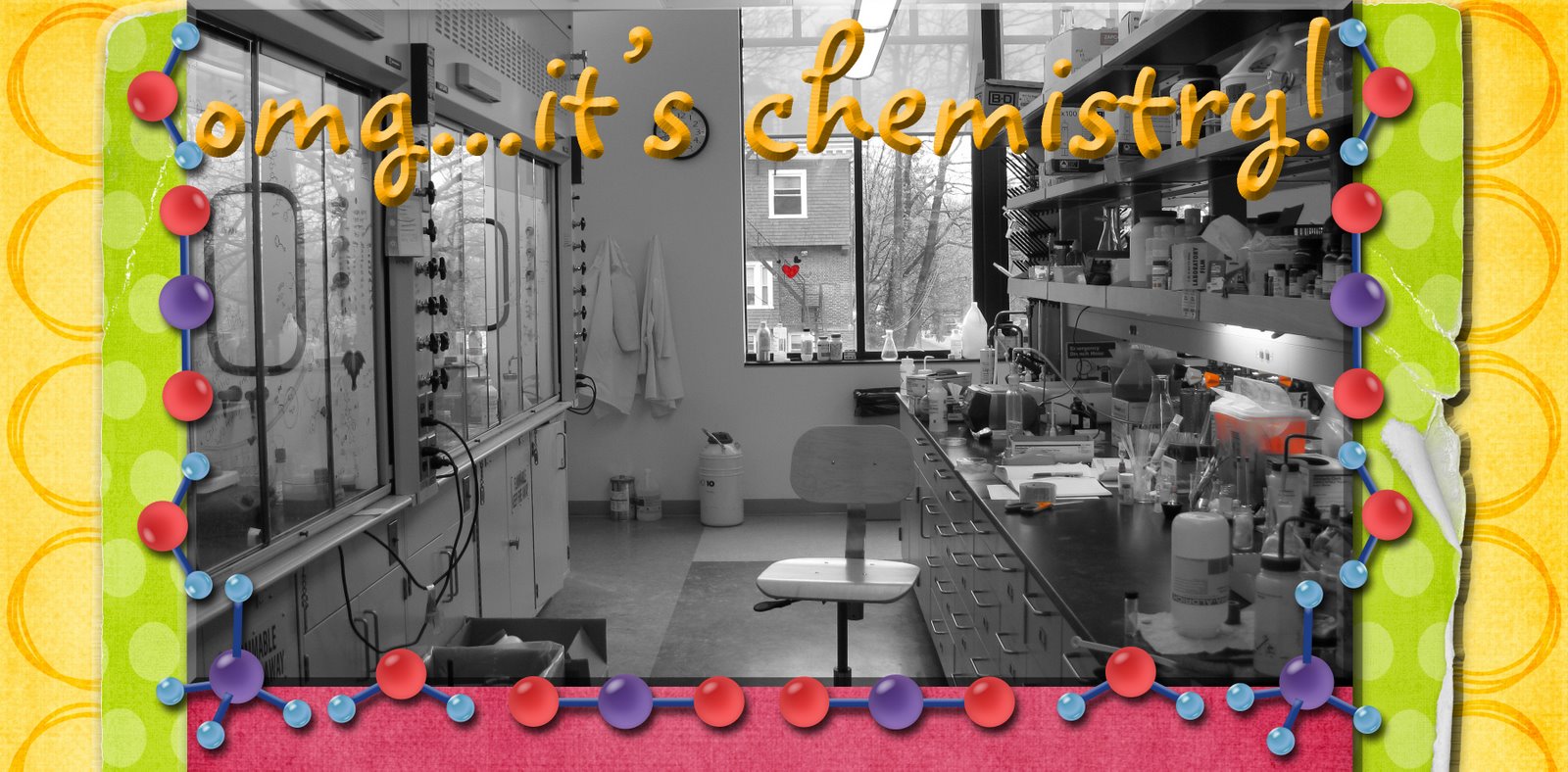Ah chemistry journals, you provided me with ample blog worthy material today as I scrolled through my google reader.
For those of you familiar with chemistry journals [all except maybe 3 of my 7 readers] skip on down to the pics!
.
.
.
(Go ahead, you're not missing anything, I promise!)
.
.
.
Ok non-chemistry folk, you may or may not know that all relevant chemistry journals are available online to peruse at our will. As graduate students we are supposed to keep up-to-date by reading these journals so we can know what's going on in the chemistry world around us.
In order to catch your attention the author of an article provides a reaction equation or some other graphic to represent the chemistry and give the reader a concept of the article as a whole. (It also makes it way easy to skim to find the important stuff) <-- This is the 'Graphical Abstract'
The most common graphical abstracts are reaction equations:
It's simple, but it gets the idea across.
Some people are a bit more creative:
An equation with a bit of flair mixed in. I'll take it!
Sustainable lithium-ion batteries? I see what you are going for here...
Another popular option: A collage like this one on fluoride recognition and sensing pulling together the chemistry and everyday life.
Others, however, decide go in a different direction:
I don't know about you, but this picture makes me want play Atari, oh and have CONTROL! In no way am I thinking about 'Self Fabricating Polyoxometelate Microtubes'
This one makes my head hurt...and..nope, that's it, nothing else. But for those of you who want to look at this for longer than 2 seconds, you may find there is no route from (1) to (10) in the maze. Maybe that's the point? [I could be wrong about this, I did it quickly]
Seriously?!? Is it a pictograph? 'Isonitriles are stinky, but reacting isonitirles and benzoxazole with n-butyl lithium and RCOX will smell like a cherries?'
Hmmm....
...And this is where it is good to have common sense enough to know that little rats and syringes aren't being reacted with alkynes to give 'starred' triazoles with pickles attached.
Feel free to sound-off in the comments below!
...and I'm going to *try* to make this a weekly post because it was wayyyy too fun!












Oh, so that's what you do all day? Make funny little squiggles with cartoon characters? Makes me want to be a chemist. I'm so proud of you!
ReplyDeleteI love it! Definitely make it a weekly post. And, of course, I needed to read the definition at the top. Proud to be one of the three chemistry ignoes!! :)
ReplyDelete